Robert Mapplethorpe was a conservative. A middle-class, suburban Catholic kid, he specialised in dramatic photographs that echoed bygone centuries of Christian iconography, Greco-Roman sculpture, Dutch memento mori scenes and Renaissance portraiture. In regurgitating the Western aesthetic tradition, he upheld a conventional and rather boring definition of male beauty. At ‘Implicit Tensions’, the Mapplethorpe exhibition currently at the Guggenheim Museum, you can count on the fingers of one hand the number of men he photographed who weren’t youthful, slim, and muscular.
It seems only right to begin an article on Mapplethorpe with a bang, and the best way to scandalise a scandal-magnet is to accuse him of being a square. Now that’s out of the way, let’s start again…
Robert Mapplethorpe was a radical. In brash, fearless photographs from the 1970s and ’80s he found an outlet for queer desires that were widely considered lethal to the American way of life. In 1990, shortly after his death from AIDS-related complications, curators at the Contemporary Arts Center in Cincinnati were charged with obscenity for displaying his work. The same year, the head of the American Family Association called Mapplethorpe’s photography ‘nothing more than the sensational presentation of potentially obscene material’. More than a quarter of a century later, the New York Times declines to reproduce his raciest images, even for editorials celebrating his genius.
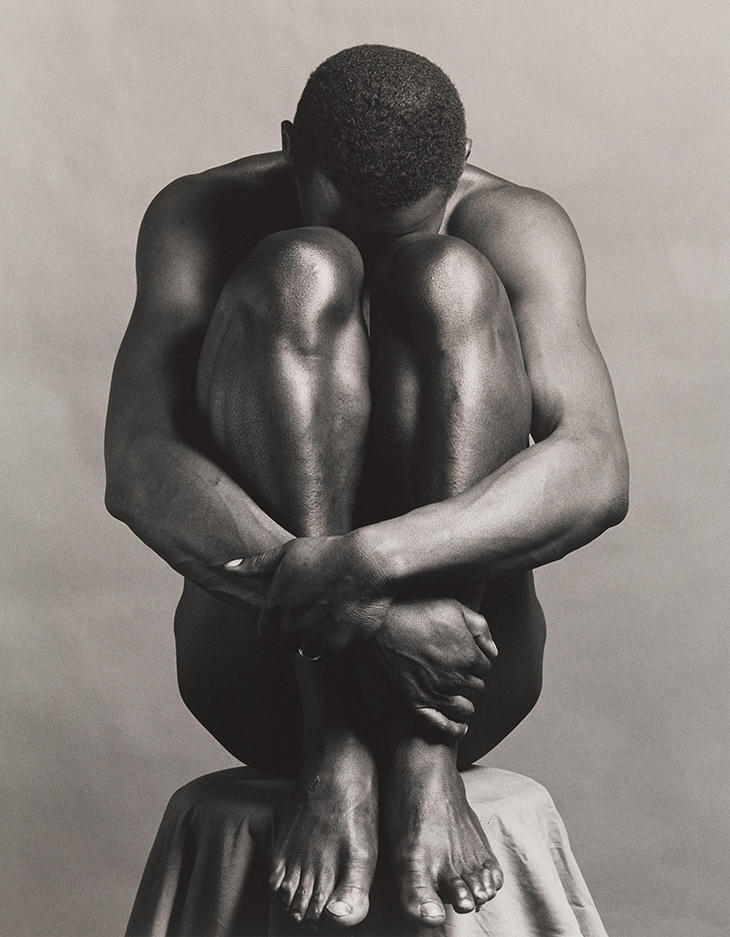
Ajitto (1981), Robert Mapplethorpe. Solomon R. Guggenheim Museum, New York. © Robert Mapplethorpe Foundation
Is this interpretation of Mapplethorpe any more valid, really, than my first? One of the more important points ‘Implicit Tensions’ makes, even in its title, is that there was always a kind of classicism in his photographs, humming along below the yelps of scandal. Study the luminous curves of his figures for long enough and you’ll start to imagine that they were carved from marble, like Michelangelo’s Dying Slave, photographic reproductions of which Mapplethorpe shot in 1974. In an era when pundits positioned themselves as defenders of the Western canon and enemies of gay kink, Mapplethorpe reminded them that one wouldn’t exist without the other.
Controversial artists tend to get defanged by posterity – what was once dangerous becomes familiar, respectable, important. Three decades after his death at the age of 42, Mapplethorpe has achieved this ambiguous honour. In addition to a year-long exhibition at the Guggenheim (part one features his work; part two, beginning in July, will study his contemporary legacy), he’s the subject of a largely hagiographic biopic, directed by Ondi Timoner. Unlike other so-called radicals, he is at ease in the midst of all this prestige. His canonisation feels less paradoxical than that of some of his contemporaries – Peter Hujar and David Wojnarowicz, for example – but it also makes his limitations clearer.
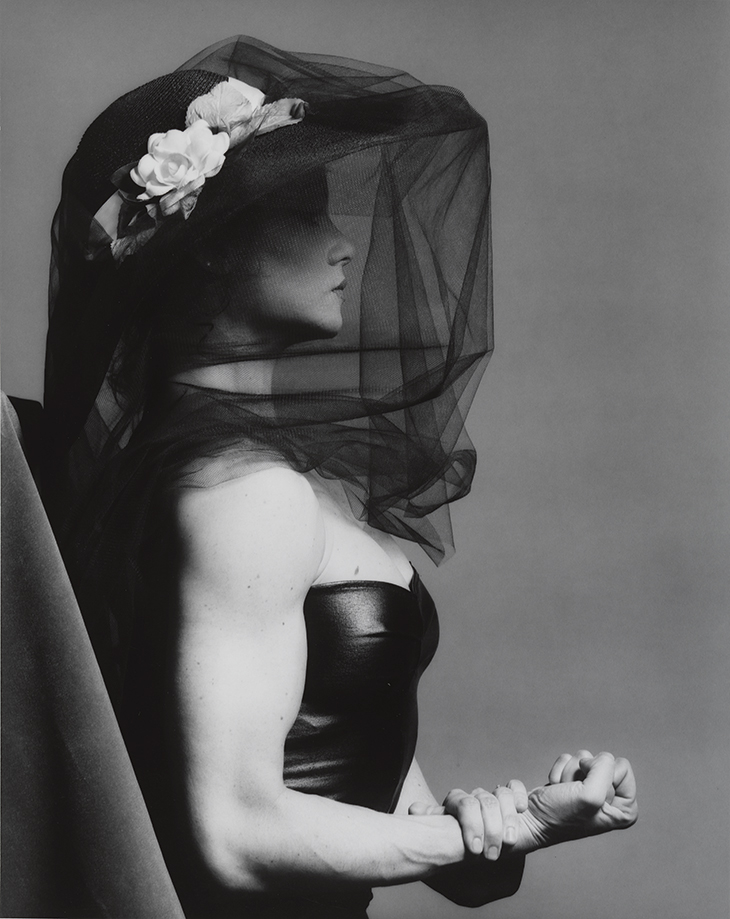
Lisa Lyon (1982), Robert Mapplethorpe. Solomon R. Guggenheim Museum, New York © Robert Mapplethorpe Foundation
In the Guggenheim, as in his career, his best work sits cheek by jowl with his slightest. The early portraits of his close friend Patti Smith, paired with others from the same period, make for a charmingly piebald view of New York in the late ’70s and the 80s: minimalists and punks, Warhol and Schwarzenegger. But because the exhibition is mostly organised by theme, with sections for floral still lifes, S&M, the bodybuilder Lisa Lyon, and so forth, the overall effect is one of inertia, even paralysis. At times the wall text tries, valiantly, to ironise Mapplethorpe’s blind spots back into political correctness. We’re informed that his photographs of black men, often stripped of clothes, names, or faces, ‘prompt consideration of the fraught relationship between the adoration, surveillance, and subjugation of black men’s bodies’, as if Mapplethorpe were carefully drawing out each one of these themes instead of smearing them all together and then drowning them in lust. A related complaint could be made of X Portfolio, the 13-part BDSM-themed series he first exhibited in 1978. The years have not been particularly kind; what was once celebrated, and excoriated, for its brazenness now seems dully matter-of-fact, a humourless, zoological cataloguing of queer mating rituals, from urophagia to fisting to gimp suits.
At his most inventive, Mapplethorpe treated shock as a jumping-off point rather than a goal. Working within the constraints of the most literal art form ever devised, he found ways of transcending literalism, producing images for which labels like ‘radical’ and ‘conservative’ are beside the point. The Guggenheim exhibition ends, predictably but rightly, with his self-portrait of 1988, taken less than a year before he breathed his last. Here, death (in the form of a skull-topped cane) has become an erotic toy, to be submitted to and dominated in equal measure. The face Mapplethorpe chooses to preserve is pale and out of focus, but there’s a faint smirk on his lips and his grip on the cane is strong – he’s exiting and entering life at the same time.
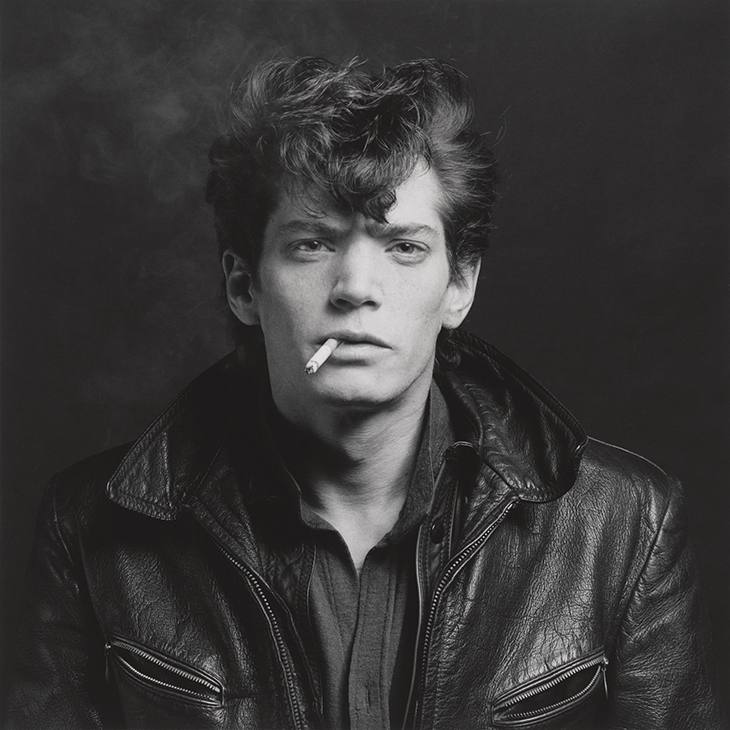
Self Portrait (1980), Robert Mapplethorpe. Solomon R. Guggenheim Museum, New York © Robert Mapplethorpe Foundation
Ten years earlier, before he knew he was dying of AIDS, before anybody knew what AIDS was, he’d played a similar game for the camera. Self Portrait with Whip (1978) is often remembered as a projectile in the culture wars, a gleeful ‘fuck you’ to Jesse Helms and family-values conservatism everywhere. But what’s most arresting about the image isn’t the mere fact of the anal penetration Mapplethorpe has captured on film: it’s his rejection of mere facts themselves; the way he makes the bullwhip poking out of his rectum look like a part of his body; the way he hunches forward, casting a long shadow on to the wall, like something out of an RKO monster movie; the way his unkempt hair and hint of a goatee make him look like a satyr or a devil; the way light glitters on his ring and the grommets in his leather – leather, which comes from a dead creature polished into posthumous glory.
The first part of ‘Implicit Tensions: Mapplethorpe Now’ is the Solomon R. Guggenheim Museum, New York, until 10 July.
From the March 2019 issue of Apollo. Preview the current issue and subscribe here.
Unlimited access from just $16 every 3 months
Subscribe to get unlimited and exclusive access to the top art stories, interviews and exhibition reviews.


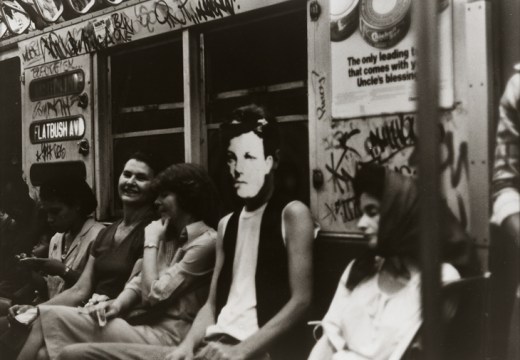
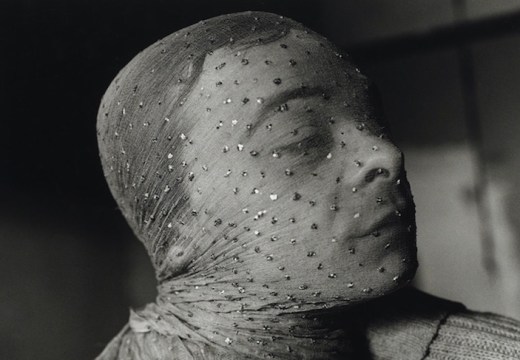










![Masterpiece [Re]discovery 2022. Photo: Ben Fisher Photography, courtesy of Masterpiece London](http://www.apollo-magazine.com/wp-content/uploads/2022/07/MPL2022_4263.jpg)
Why are fathers so absent from art history?